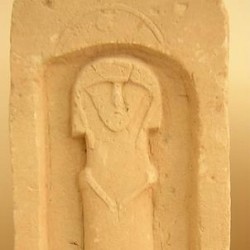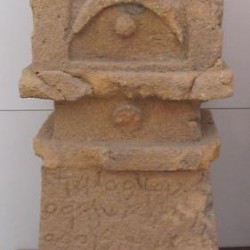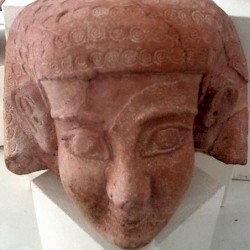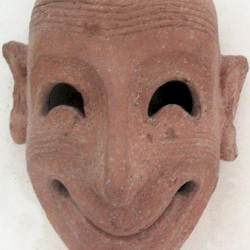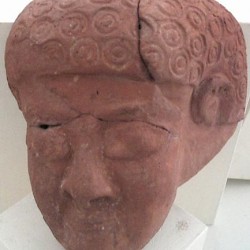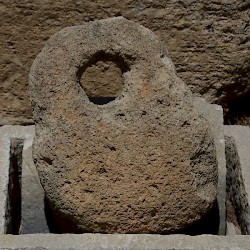Motya - Museum Pieces
Motya: Phoenician city on an island in the west of Sicily, modern Mozia.
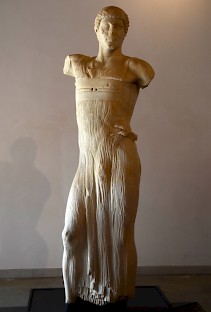
On this page, you will find some pictures from the small museum on the isle of Motya, which is in the "Villa Whitaker", called after the archaeologist who started the excavations after Heinrich Schliemann, who wanted to solve "historical questions" and was not interested in the material culture of a civilization for its own sake, had abandoned the site.
This first photo shows the splendid marble "Motya Kouros", which is just a bit larger than life-size, and was discovered in 1979. It resembles the more famous Delphian charioteer, which is not very much older. Stylistically, the statue from Motya can be dated to the second quarter of the fifth century ("wet drapery style") and it was made by a very capable Greek artist.
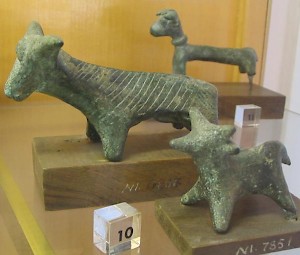
If this statue represented a charioteer, his lost right hand (left for the viewer) may have carried a wreath or may have waved to the audience. Some scholars say the man carried a club, in which case this statue represent is not a charioteer but the demigod Heracles, crowning himself with a laurel wreath. Unless the arms are found, we will never know, and for this reason, this statue, which used to be called "Motya Charioteer" is now called "Motya Kouros".
Most of the photos below are from the Villa Whitaker. The charming bronze animals to the right are from the Regional Archaeological Museum "Antonio Salinas" in Palermo.

